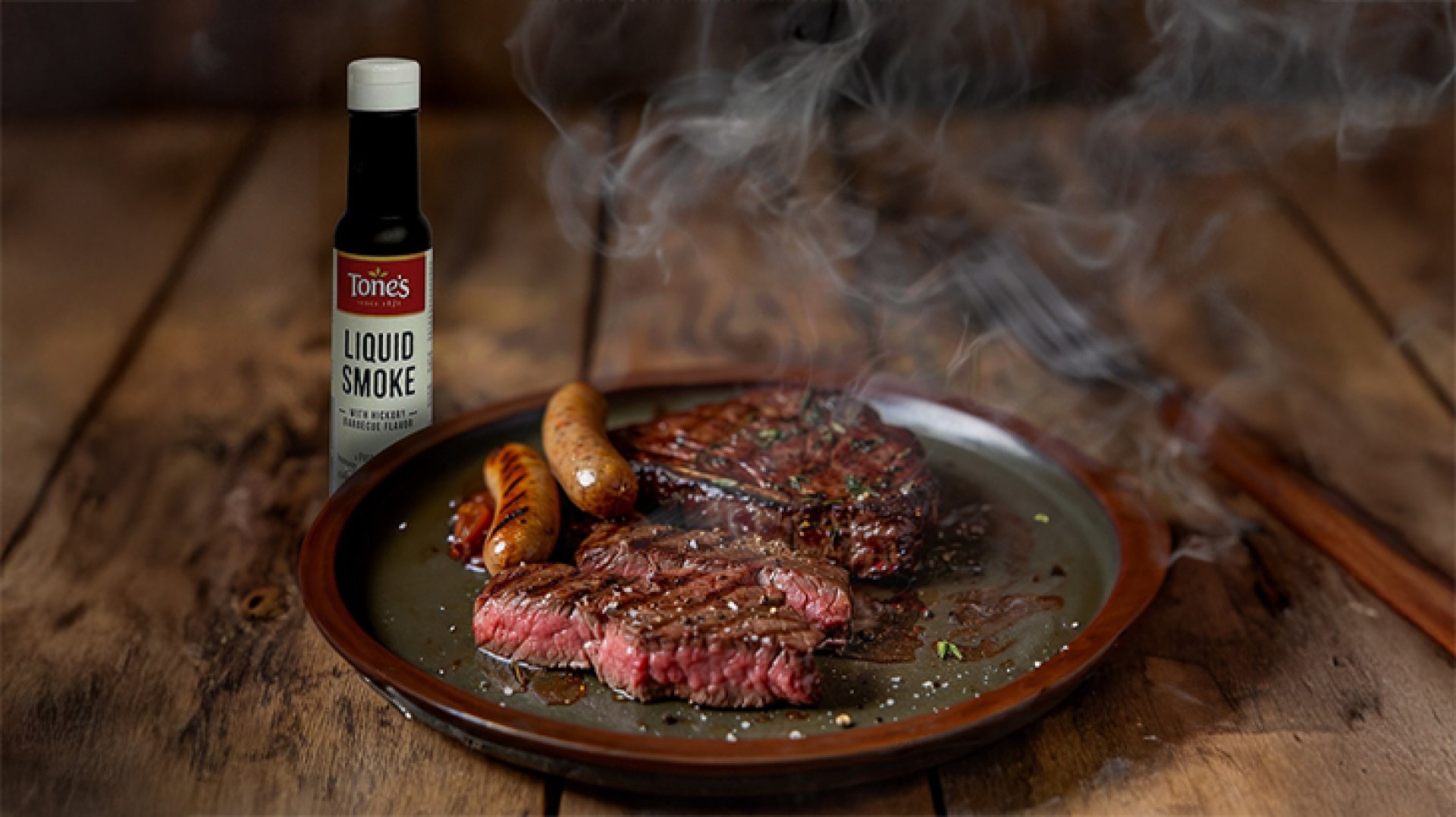Liquid Smoke

The concept of smoking food has a long history, with ancient civilizations employing various smoking techniques. However, in those times, smoking wasn't primarily aimed at creating a unique aroma, but rather served as a form of food preservation.
In the earliest days, it's believed that cave dwellers, likely without chimneys, would hang meat to dry by smoking it. This led them to discover that in addition to preserving the meat, the smoke also enhanced its flavor and aroma.
Over centuries, meat smoking remained widely known. People in later eras further discovered that different types of wood used for smoking imparted distinct aromas. This led to the use of smoking in food to enhance the dining experience, moving beyond mere preservation.
From the Era of Gas Stoves to the Invention of Liquid Smoke (Late 19th Century)
In the modern era, traditional wood-fired cooking began to decline, especially in homes. People increasingly turned to gas stoves, which produced very little smoke. This led to the invention of Liquid Smoke, or liquid smoke, to impart a smoky flavor to food without the need for traditional smoking methods.
Liquid Smoke, or liquid smoke, is a type of food additive, appearing as a liquid ranging from yellow to red. It is commonly used as a substitute for traditional smoking to add smoky flavor and aroma to food, without requiring a smoker or burning real wood.
The concept for inventing Liquid Smoke originated with Ernest H. Wright, a pharmacist from Kansas City, the largest city in Missouri, USA, during the late 19th century. The story goes that Wright was inspired by seeing liquid dripping into the flue of a stove while it was actively smoking. This prompted him to begin experimenting with creating Liquid Smoke.
Production Process and FDA Approval (1895 - 1960 AD)
Wright's experiments revealed that the liquid dripping into the stove's flue resulted from condensation produced by cold smoke. He then began to develop Liquid Smoke by spraying smoke from burning hickory wood through a condenser, a heat exchanger used to condense gaseous substances into a liquid state through cooling, thus creating Liquid Smoke.
Wright's goal in creating Liquid Smoke was to offer a convenient alternative for adding smoky flavor to food without using traditional wood fires. Furthermore, the use of Liquid Smoke could also help extend food's shelf life, inhibit bacterial growth, and be free from carcinogens that might arise from traditional smoking.
In 1895, Wright patented his Liquid Smoke, and in 1960, Liquid Smoke received approval from the FDA (U.S. Food and Drug Administration). Consequently, its popularity spread throughout the United States. People commonly sprayed or brushed it onto meats, bacon, sausages, cheese, or drizzled it onto cooked dishes, as well as mixed it into sauces, soups, and salad dressings.
Current Popularity and Development
Currently, Liquid Smoke has gained increasing popularity internationally. Companies continue to develop the product, experimenting with making Liquid Smoke from various types of wood to achieve a wider range of flavors and aromas.


